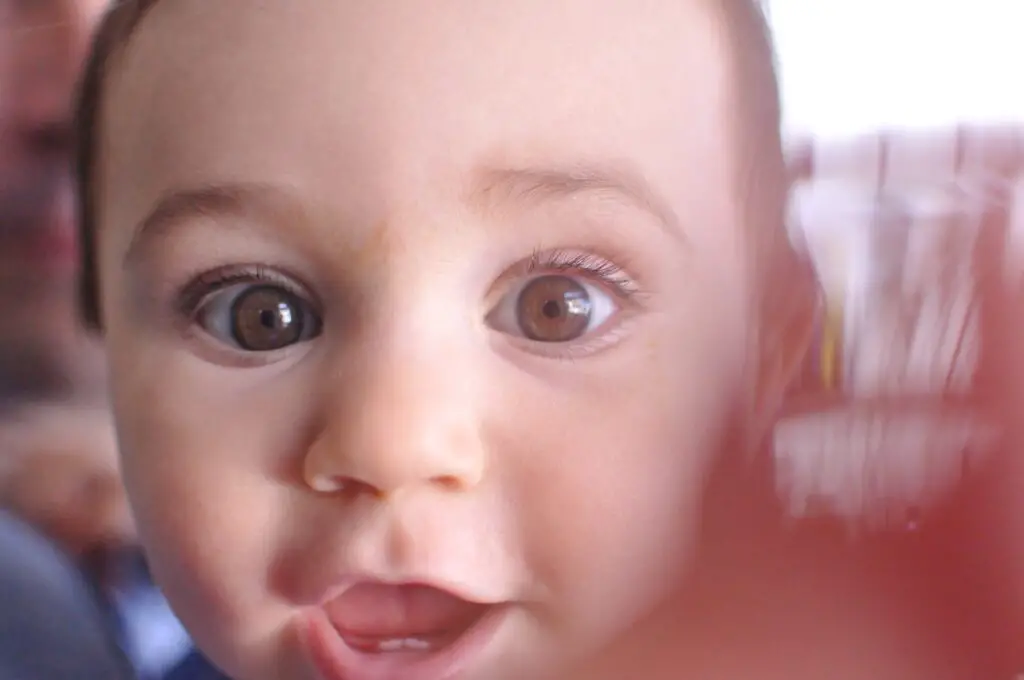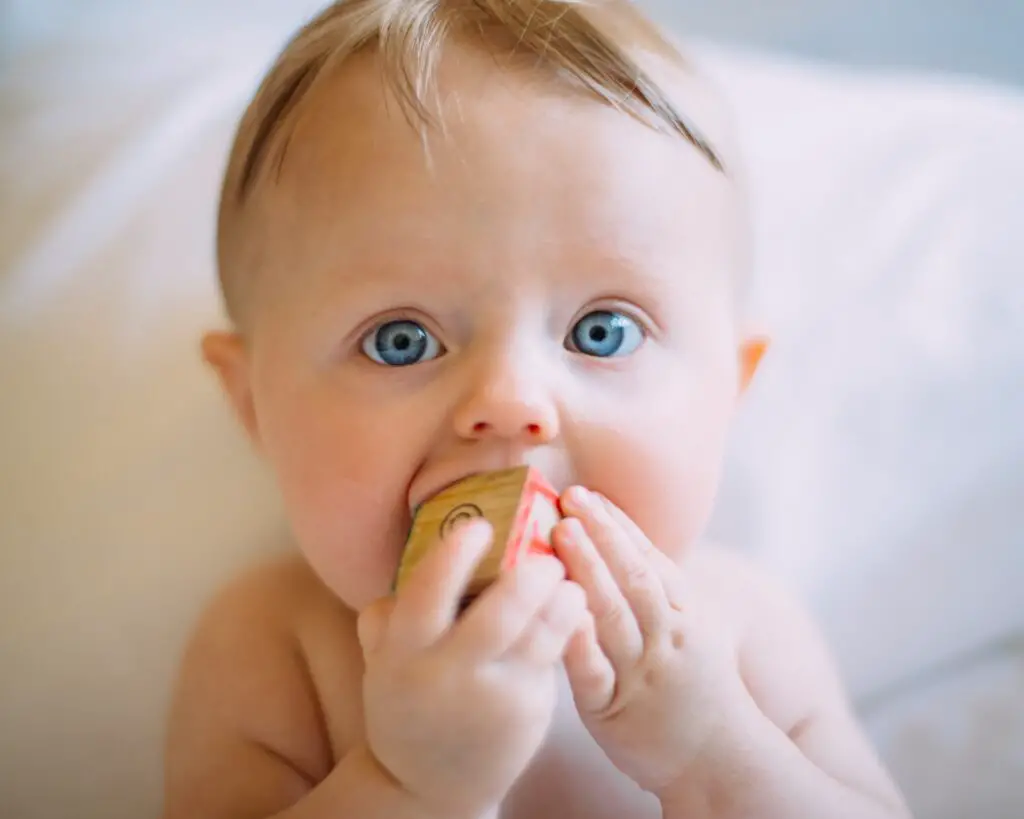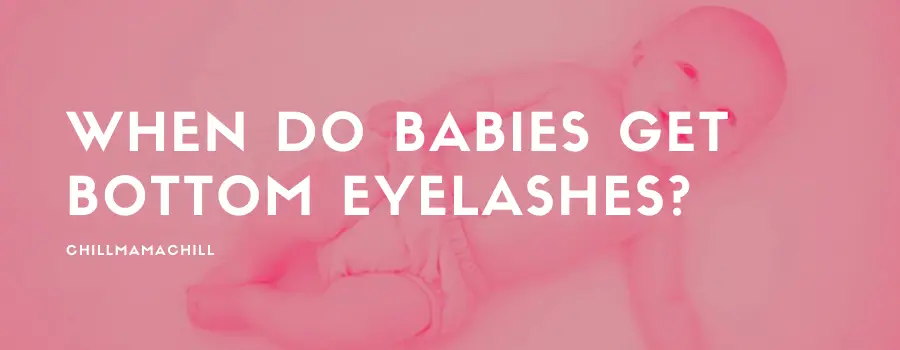Nothing warms your heart faster than looking into the face of your newborn. You’ve noticed their lashes appearing soon after birth, but only the top eyelids appear to be adorned. So, when do babies get bottom eyelashes, and why do they lag behind their upper counterparts?
It takes about 12 months for your baby’s eyelashes to reach their full potential, and the bottom can appear lash-less until the third month after birth. Their growth fluctuation differs from upper lashes in replacement phases, where they’ll sometimes disappear altogether. It’s until the age of between two and four years that they stop growing, staying a constant length for the rest of life.
Your baby’s upper eyelashes are longer, with deeper roots than the lower ones. It’s thought that this has to do with innate communication traits but more so protection of the eyeball. Since hair starts growing from the womb, read further to finds out when your baby is due to get bottom lashes.
When Do My Baby’s Bottom Eyelashes Develop?
Eyelashes are one of those vital but often overlooked aspects of your baby’s facial features. They’re responsible for stopping dust, insects, and sweat from entering the eye. When they darken, lashes help to filter out strong light, but that capacity is not as pronounced in the newborn stage.

Your baby’s eyelashes start developing in the womb during the fourth month or the beginning of the second trimester. As your pregnancy enters the 21st week, hair follicles all over the fetus’s body sprout a downy un-pigmented fur called Lanugo. It’s for warmth and skin protection, covering everything except your child’s lips, soles of the feet, and palms of the hands.
After lanugo, your baby starts developing head hair alongside eyebrows and eyelashes. Babies can be born with dark or blonde lashes or none at all, determined by their genetic predisposition. Whatever the case, by the time your child is two, they’ll have grown, thickened, and darkened to match the color of eyebrows and hair.
Compared to the bottom’s 75 eyelashes, there are approximately 160 lashes in the upper eyelid. Your baby’s top ones grow to at least 0.31 inches while the lower ones only reach about 0.23 inches. Without them, your child’s eyes will dry out quickly, and they’ll be unable to prevent debris and germs from affecting their eyeballs.
My Baby Was Born with Bottom Eyelashes That Soon Fell Out, Is This Normal?
Eyelashes not only give your baby’s face its aesthetic properties, but they are also essential for eye protection. There are lubricating ducts underneath each lash which helps give your child’s eyeball a tear bath for cleanliness.
The color and size of newborn eyelashes are sometimes too faint or light to see for the first few weeks. Often any lashes your baby is born with will be shed after birth, particularly the bottom ones. However, they’ll grow over time and darken to resemble their more prominent upper neighbors.

Similar to your baby’s hair, lashes are made up of 3% water and 97% keratin proteins. This is the same substance that makes up nails, skin, and silk. Eyelashes are rooted on the eyelid but lack muscles which causes body hair to stand when goosebumps are stimulated. Each lash receives nourishment from follicles and goes through 45 days of growth, 3 weeks while no-growing, and a shedding phase.
What Are the Growth Phases of My Baby’s Bottom Eyelashes?
Once a lash gets shed, the follicle generates new hair, and the process repeats. These phases are similar for babies as well as adults, and they’re labeled;
- Anagen: That’s the essential phase when the eyelash is growing, lasting between 35 and 45 days. At the moment, at least 35% of your baby’s eyelashes are in the anagen stage.
- Catagen: The phase occurs when the eyelash is fully developed. At this stage, the lash goes through a transitional period, and its follicle starts to shrink in size.
- Telogen: That’s the eyelashes resting phase. The stage lasts around 85 to 100 days, and nearly half of your baby’s lashes go through it simultaneously. It’s during Telogen that a new lash starts to develop underneath the old, longer one.
- Exogen: As the name describes, this is the phase where your baby’s old lashes get shed. A new lash that has grown under it pushes it out and replaces it.
When Should I Worry That My Baby Doesn’t Have Bottom Eyelashes?
There are a lot of things to worry about when you’re looking after a newborn baby. You’ll be obsessing over strange allergies to weird colors of poop, wanting to make sure they’re healthy and safe. But you shouldn’t worry too much if your newborn has no bottom eyelashes in the first two months of birth.

Sometimes, the lower lids’ lashes are tiny or hidden within folds of pudginess under the eye. Some won’t grow eyelashes immediately, but their total lack shouldn’t proceed past the fourth month. Remaining lash-less can indicate underlying conditions that include;
- Madarosis
- Trichiasis
- Blepharitis
- Alopecia areata
- Scleroderma
- Hyper and hypothyroidism
- Lupus
You must talk to your baby’s doctor if the absence of bottom lashes continues. Sometimes, your hormonal imbalances during pregnancy can delay the growth of your child’s lower eyelashes. Many such conditions that impact your tot’s hair can get treated or managed, while they get over others naturally as they age.
If your newborn baby lacks bottom lashes, keep their environment as dust-free as possible. Help cover your child’s eyes from direct sunlight and limit time outdoors when it’s dusty, windy, or with a high pollen index. Wipe your baby’s eyelids gently to avoid getting soap into the eyeball.
Conclusion
A fun fact is that eyelashes are usually the darkest hairs on your baby’s body. As such, bottom lashes that haven’t grown will appear and darken enough to match those on their upper eyelids. After falling off around the 12th week of life, the bottom lashes your newborn had will regenerate and come back within its anagen or 35-to-45-day period.
Avoid, cutting trimming or applying growth serums to your baby’s eyelashes. You’ll be leaving your child without protection from dust, debris, and infections. Lathering your child’s lashes with Vaseline only interferes with vision and the eye’s natural hydrating processes.

I’m Cathrine and I’m a 39-year-old mother of 3 from Utica, New York. And I’m extremely happy you’ve come to visit my hide-out on the web. Here I post about everything related to family-life and usually it will involve babies and lessons I’ve learned over the years from experts, friends, and my own mistakes. So hopefully you will find what i write fun and informational!

